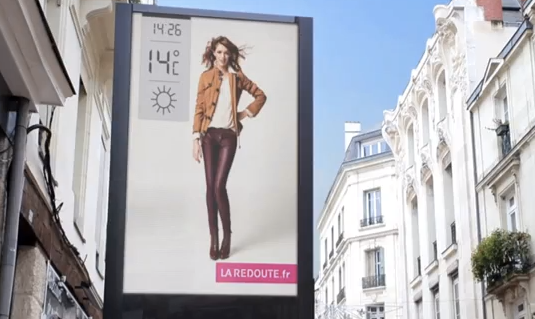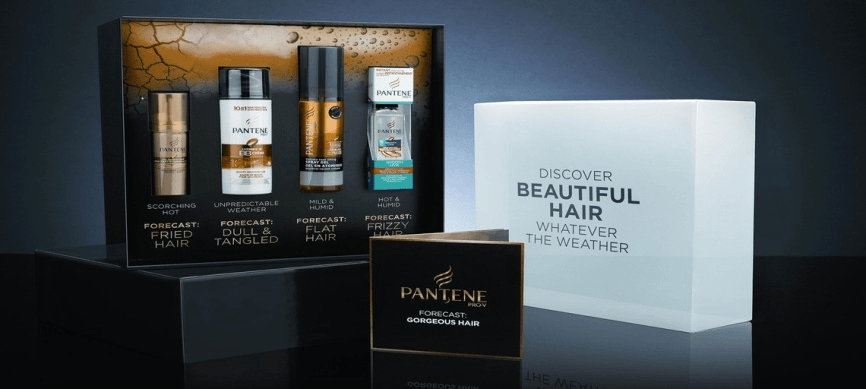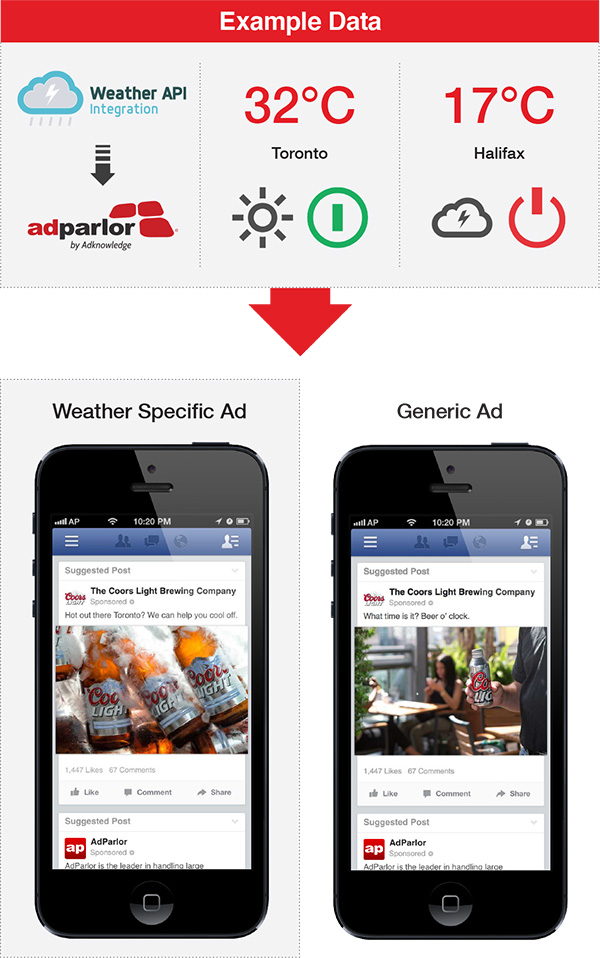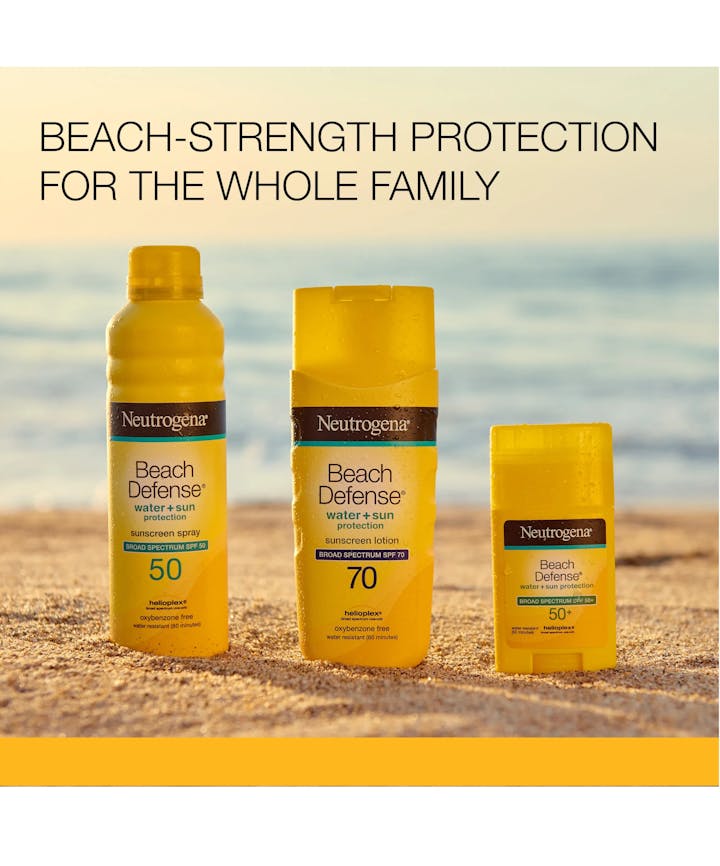Weather-Based Ads: How to Use Weather to Improve Ad Performance
Weather-based ads can lift clicks by 89% and sales by 28% by matching messages to real-time conditions. From temperature and rain to UV index triggers, this guide shows proven tactics and brand examples that make ads more relevant, timely, and effective.


Weather-based ads are like talking to your customers when the timing feels just right.
In one campaign, hot weather ads crushed the generic ones. Clicks went up by 89%, brand mentions climbed 50%, and comments increased 33%.
That is the power of matching your message to the moment.
In this guide, you will learn how to use weather-based ads to boost engagement, start conversations, and get more results from every campaign.
Key takeaways
- Weather-based ads match creative to real-world conditions, driving up to 89% more clicks than generic ads.
- Weather is the second-biggest driver of consumer behavior after the economy, influencing what people buy daily.
- Triggers can include temperature, rain, UV index, humidity, air quality, or pollen count for ultra-precise targeting.
- Real campaigns like La Redoute and Pantene have seen 17–28% sales lifts by syncing ads to weather changes.
- Avoid narrow triggers, keep creative relevant, and test across multiple channels for consistent performance.
What are weather-based ads?
Weather-based ads are campaigns that respond to real-world weather conditions in specific locations. Instead of running the same creative everywhere, you match your ad message to the weather your audience is actually experiencing.
That could mean showing hot coffee promotions when it’s rainy, sunscreen ads when UV levels spike, or winter tire offers before the first snowstorm. The right message at the right moment can lift engagement and sales in a way generic ads can’t match.
Molson Coors proved this with a campaign where ads triggered in hot weather delivered 89% more link clicks, 50% more brand mentions, and 33% more comments compared to generic versions. Those are the kinds of numbers that make marketers pay attention.
The best part? You don’t have to be a global brand to use this approach. Even small businesses can trigger Facebook, Instagram, or Google Ads based on local weather events and see instant relevance.
How weather affects shopping habits
Weather is one of the most universal drivers of human behavior. It affects what we wear, eat, buy, and even how much we’re willing to spend. In fact, it’s the second-biggest influence on consumer behavior after the economy.
Everyday temperature changes can trigger surprising shifts in demand. A one-degree Fahrenheit increase in the U.S. can lift air conditioner sales by 24%, boost soft drink purchases by 2%, and even increase infant apparel sales by 4%.
Location matters too. Sainsbury’s found that BBQ sales triple in Scotland at 68°F but require 75°F in London for the same effect. This means the same campaign will perform very differently in different markets.
For brands, this is a chance to be hyper-relevant. Weather data reveals not just who your audience is, but what they want right now.
Weather conditions you can target in ads
Marketers can target far more than just “hot” or “cold.” Modern weather APIs and tools like WeatherAds let you trigger campaigns using dozens of variables:
- Rain or snow
- Heatwaves or cold snaps
- UV index
- Humidity levels
- Wind speed
- Air quality
- Pollen count
This level of control means a skincare brand can run a moisturizer campaign only on low-humidity days, or an allergy medicine brand can advertise when pollen counts spike.
By combining multiple conditions, you can create incredibly precise triggers. For example: “Show umbrella ads in New York when it’s raining AND wind speed is over 10mph.” That’s weather-based targeting at its best.
Best ways to use weather-based ads for your business
Different industries can tap into weather-driven demand in unique and highly profitable ways.
Retail
Seasonal apparel, footwear, and accessories sell best when promoted at the exact moment customers need them. Take La Redoute, for example. They used live weather billboards that automatically changed the model’s clothing based on local temperature and rain conditions. When the weather cooled, warmer outfits appeared; when it warmed, lighter styles took over. This simple switch boosted traffic by 34% and sales by 17%.

Food & Beverage
People’s cravings change with the weather, and your ads can change right along with them. A great example is Lipton Ice Tea, which ran thermo-activated Facebook ads triggered during hot weather. When the heat hit, the ads showed refreshing visuals and offers, reaching 6.9 million people and achieving a 12.8% video view rate.
Travel & Hospitality
Bad weather at home is the perfect moment to sell a sunny escape. One online travel brand did just that, targeting cities experiencing snowstorms with ads for warm beach destinations. Bookings spiked because the ads hit when travelers were most eager to get away.
Pharma & Health
Weather impacts health needs more than we realize. Pantene tapped into this by running humidity-triggered ads for anti-frizz hair products. When moisture in the air rose, their ads went live, resulting in a 28% sales increase and 600,000+ social impressions.

Home Services
Some services sell best just before or during bad weather. Take Indow Windows, which promoted energy-efficient window inserts during cold snaps. Their Facebook ads showed cozy indoor scenes with messaging about blocking drafts, leading to more leads at a lower cost per lead.
How weather-based ads work
Weather-based ads sync your campaigns with real-time or forecasted weather so your message lands exactly when it’s most relevant. Here’s how to set them up:
Step 1: Choose your trigger conditions
Decide what specific weather events will activate your ads.
For example, you might use “temperature below 45°F,” “UV index above 7,” or “rain forecast within the next 24 hours.”
Step 2: Connect to a weather data source
Integrate a trusted provider like OpenWeatherMap, Ambee, or Tomorrow.io with your ad platform.
This connection ensures your ads respond instantly to changes in local conditions.
Step 3: Build your creative variations
Prepare separate ad sets for each type of weather you’re targeting.
If it’s hot, your ad might show iced drinks; if it’s cold, you might highlight warm comfort food.
Step 4: Set automation rules
Use a tool like WeatherAds to automate when ads are activated or paused.
A simple rule could be: “If temperature > 80°F in Miami, run the cold drink ad set.”
Step 5: Test and monitor performance
Review performance regularly to see which triggers work best.
You might adjust temperature thresholds, timing, or creative based on actual engagement data.
Take this for instance, Molson Coors set their beer ads to activate only when it was above 23°C and sunny in targeted locations. When those conditions hit, the ads went live automatically. The result? 89% more clicks, 50% more brand mentions, and 33% more comments compared to generic ads. That’s the power of hitting people with the right message at the right moment.

Where you can run weather-based ads
Weather targeting isn’t tied to one platform — it works across many channels.
On Google Ads, you can set up weather-based scripts to adjust bidding or trigger ads. On Meta platforms like Facebook and Instagram, integrations with WeatherAds allow precise automated targeting. Many programmatic DSPs offer built-in weather targeting options.
You can even take this offline with Digital Out-Of-Home screens. A great example is Stella Cidre. Their billboards activated only when the weather was dry and 2°C warmer than average. By only showing ads in prime cider-drinking conditions, they achieved a 65.6% year-over-year sales increase and cut wasted impressions by 50%. (Insert Stella Cidre billboard image)
The same logic applies to Product Listing Ads, Messenger Ads, and even synchronized campaigns where your Facebook, Google, and DOOH creative all shift together as the weather changes.
Where to get weather data for ads
Your campaign is only as good as the data feeding it. That’s why you need a reliable weather data provider.
OpenWeatherMap offers affordable, global coverage and frequent updates. Ambee is strong on air quality and environmental data, while AccuWeather is a trusted name for accurate forecasts. Tomorrow.io specializes in hyper-local predictions that can be vital for precise targeting.
Here’s an example: A retail brand selling raincoats used Tomorrow.io to trigger ads one day before rain was forecast. This “get ready before it hits” strategy helped them capture customers who wanted to prepare in advance, driving higher conversion rates than ads run during the rain itself.
Real results from weather-based ad campaigns
It’s one thing to know weather-based ads work — it’s another to understand why they deliver such strong returns. Let’s break down a few standout campaigns, the thinking behind them, and how you could apply the same approach.
Neutrogena – UV-triggered sunscreen ads
Neutrogena wanted to promote their Beach Defence Sunscreen at the moment people were most likely to need it. They set up in-app ads that activated only when UV levels spiked in a location.

Why it worked: UV index is a direct signal of when consumers think about sun protection. By delivering the ad in that precise window, they tapped into a real, immediate need. This campaign boosted purchase intent by 43% and raised product awareness from zero to 63%.
How Cropink could make it easier: With Cropink, you could design multiple creative variations — one for high UV, one for moderate UV, and one for cloudy days — all from your existing catalog. Cropink’s conditional logic would automatically map the right creative to the right condition, so your ads always match the weather without manual swaps.
Burton Menswear – cold-weather dynamic promotions
Burton Menswear integrated weather triggers into their eCommerce site so that when temperatures dropped, their homepage and ads switched to highlight winter jackets and accessories.
Why it worked: It created a seamless, weather-relevant shopping journey. Consumers saw ads for jackets and landed on a site where cold-weather products were front and center. That continuity produced an 11.6% uplift in conversions without increasing ad spend.
How Cropink could make it easier: Instead of coding site changes manually, you could connect your Shopify or XML feed to Cropink, create cold-weather templates, and set rules so your Facebook, Instagram, and Google Shopping ads all shift instantly with the weather.
Pure360 – sunny-day holiday email campaigns
Pure360 ran email campaigns for domestic holiday offers that triggered only during sunny forecasts. The logic was simple — when the sun is shining, people are more likely to think about taking short breaks.
Why it worked: The timing matched the audience’s mood and aspirations. Recipients were already feeling positive, so the idea of booking a getaway resonated. This strategy led to 500% higher open rates and CTR jumping from 12% to 27%.
How Cropink could make it easier: While Pure360 used weather data for email, Cropink could help you extend that same targeting to your paid social ads. Imagine running weather-matched product ads on Meta at the same time as your email hits inboxes — with the same creative style for brand consistency.
Pantene – humidity-triggered haircare ads
Pantene’s anti-frizz product line was a natural fit for weather targeting. They ran display ads that went live during high-humidity conditions, exactly when consumers experience frizz problems.
Why it worked: It addressed an immediate problem in a timely way. The ad didn’t need to convince people they might need anti-frizz care — the weather had already done that. The result was a 28% sales increase and 600,000+ social impressions.
How Cropink could make it easier: Pantene’s team could have used Cropink to quickly create multiple ad versions for different humidity ranges — swapping product shots, on-image text, and even customer reviews. Cropink’s dynamic templates would keep the brand’s fonts, colors, and layout consistent across every variant.
Why these campaigns succeed
Each of these brands matched their message to both the consumer’s environment and their mindset. Weather data wasn’t just a trigger — it was the context that made the ad feel hyper-relevant.
With Cropink, you don’t have to be a global brand with a huge creative team to pull this off. You can:
- Connect your product catalog from Shopify, Meta, or XML.
- Design multiple weather-specific templates in minutes.
- Set automation so the right creative shows in the right conditions — no manual swaps, no dev work.
That’s how you turn weather-based targeting from a nice idea into a scalable, revenue-driving strategy.
Rules and privacy tips for using weather data
Weather-based ads are naturally less intrusive than many other targeting methods because they rely on environmental signals rather than personal identifiers. You’re reacting to the conditions a group of people are experiencing, not tracking their individual browsing histories or purchasing behavior.
However, if you combine weather triggers with geolocation targeting, you must follow strict privacy regulations such as GDPR in Europe or CCPA in California. These laws exist to protect consumers from having their personal data collected, processed, or shared without their explicit consent.
In practical terms, this means:
- Avoid using precise, individual-level location data without permission.
- Work with aggregated or anonymized data instead — for example, “users within a 10-mile radius of Chicago where it’s raining” instead of “Sarah Jones in Chicago.”
- Make sure your privacy policy clearly explains how you use location information and what it’s for.
Transparency is not just about legal compliance — it’s a trust builder. When people know why they’re seeing a certain ad (“Rainy day? Stay warm with our seasonal menu”), it feels relevant rather than creepy.
By using anonymized location data in combination with weather triggers, you can still deliver highly relevant campaigns, like showing ads for snow tires just before a snowstorm hits a region, while staying within legal and ethical boundaries.
The sweet spot is relevance without intrusion: letting weather inform your timing and creative, without crossing into personal surveillance.
Common mistakes with weather ads
Even well-planned weather-based campaigns can fail if they’re not set up thoughtfully. Here are the big pitfalls:
| Mistake | Why It’s a Problem | How to Fix It |
|---|---|---|
| Overly narrow triggers | If your ad only runs when it’s “80°F and sunny,” it might only show a few days per year in certain markets. | Broaden your triggers to keep delivery consistent while staying relevant — e.g., “above 70°F and partly sunny.” |
| Generic creative | Weather targeting works because it connects to the moment. If your rainy-day ad doesn’t reference the rain or show relevant imagery, it feels random. | Match visuals and copy to the weather — for cold weather, use warm indoor scenes or products that solve winter discomfort. |
| Platform limitations | Some platforms have restrictions — e.g., Facebook allows a maximum of 200 custom locations per ad set. | Plan in advance for large campaigns by splitting into multiple ad sets to avoid coverage gaps. |
Tips to make your weather ads better
The success of weather-based ads isn’t just about when they run — it’s also about how they look, feel, and connect with the audience in that exact moment. Small creative choices, trigger settings, and timing decisions can make the difference between an ad people scroll past and one they act on immediately.
- Match creative to the weather: Make sure your visuals, colors, and copy reflect the actual condition. On hot days, bright colors and cooling imagery can feel refreshing. On rainy days, darker tones and cozy visuals resonate.
- Add urgency: Weather conditions are temporary. Using phrases like “Today only” or “While it lasts” can push people to act before the moment passes.
- Use dynamic creative optimization: Instead of manually swapping ads for each condition, use tools that automatically deliver the right version based on the trigger. This keeps campaigns timely without constant adjustments.
- Test your triggers: Start broad — for example, “over 60°F” instead of “exactly 70°F” — then narrow once you have performance data. Some audiences respond to mild conditions just as much as extremes.
- Coordinate across channels: Consistency matters. Run matching weather-responsive creative on social media, search ads, and even out-of-home placements so people see a unified message.
FAQs
Weather related advertising is marketing that adapts its message or timing based on real-time or forecasted weather conditions in specific locations.
Some examples of targeted ads are ads based on location, demographics, interests, online behavior, purchase history, or weather conditions.
Weather triggered Facebook ads are campaigns that automatically activate or change based on live weather data, such as showing cold drink ads during a heatwave.
Weather responsive advertising is advertising that changes creative elements, offers, or messaging to match current or forecasted weather in the audience’s area.
Final thoughts
Weather-based ads prove that timing is everything. By aligning your message with real-world conditions, you can boost clicks, sales, and brand connection without feeling intrusive.
The right creative at the right moment turns casual viewers into eager buyers.
With Cropink, creating weather-specific ads is quick, automated, and always on-brand — no design headaches or manual swaps. Try it free today and see how easy it is to turn weather data into winning campaigns.
Right weather, right message, better results — create weather-based ads in minutes with Cropink, and try it free today.
Sources

Ansherina helps brands create powerful digital marketing and performance marketing strategies. With a passion for ad design and audience engagement, she is dedicated to making brands more visible and impactful.

Leszek is the Digital Growth Manager at Feedink & Cropink, specializing in organic growth for eCommerce and SaaS companies. His background includes roles at Poland's largest accommodation portal and FT1000 companies, with his work featured in Forbes, Inc., Business Insider, Fast Company, Entrepreneur, BBC, and TechRepublic.
Related Articles
Crafting a successful Christmas ad campaign means blending festive spirit, storytelling, and smart marketing strategies. From iconic brand examples to essential tools, this guide helps you create ads that resonate and drive holiday sales.

Bringing independent creatives together to work as a team can be a challenge, especially in fast-paced marketing environments. Learn how to overcome communication barriers, set clear goals, and use smart project management to boost collaboration and deliver great results.

Pinterest is no longer just for inspiration—it’s a performance marketing powerhouse. Discover 7 ad formats, from AR Try On to shoppable Idea Ads, and learn how Pinterest drives high-intent traffic and sales in 2025.

Looking for the perfect Valentine’s Day slogan? Explore catchy, cute, and creative Valentine slogans for cards, gifts, marketing campaigns, and more!

Struggling to get clicks? Learn how to write ad text that converts in 2026—by focusing on emotions, benefits, and mobile-first copy. Discover proven tactics, from urgency to personalization tools like Cropink.

Showcase Shopping ads were a powerful tool for upper-funnel product discovery, but they were officially retired in 2021. This comprehensive guide explains the original ad format and provides a strategy for replicating its broad search and visual storytelling success using the modern Google campaign types.

Pinterest ads do not fail because of budgets. They fail because of small rule breaks. This simple 2026 guide shows you exactly what Pinterest approves, what it blocks, and how to design ads that blend into the platform and actually perform. If you want fewer rejections and better results, this is the checklist you should read before launching your next campaign.

With 76% of consumers planning to celebrate Father's Day, the revenue opportunity is huge, but so is the competition. This guide shows you seven creative Father's Day ads that stood out for the right reasons. Learn the tactics these brands used and how you can adapt them for your own products or services.

The objectives of advertising in 2026 go beyond awareness. With 63% of global ad spend now digital and triggered emails converting 88% better, brands must align goals like lead generation, loyalty, and engagement to maximize ROI. Learn how strategic ads deliver results.

Bandwagon advertising uses social proof to influence buyer behavior. With 69% of millennials driven by FOMO and 20% of consumers influenced by celebrities, popularity becomes a growth engine. See how to turn engagement into conversion using real-time tactics and creative tools.

Creating a successful ad campaign is a science, not a gamble. This comprehensive 8-step guide provides the framework you need to launch your first profitable ad and continuously optimize for maximum return.

Discover how to tap into Facebook Messenger’s 947 million users in 2026. Learn how Messenger ads drive real engagement by starting direct conversations—right where your audience is already active.

How Can Cropink Help?
Start with Cropink is easy and free
No credit card required